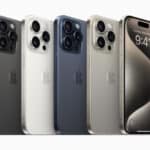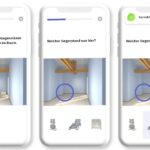 „Actually the best option to monetize mobile content is using a freemium model with in-app purchase“, Javier Correro, Senior Director of Business Development at mobile advertising agency Crazy4Media, told mobilbranche.de. Correro will speak at the mobilewebtainment conference, which takes place October 17th in Berlin. There he will talk about „The new generation of mobile billing, and how it will affect mobile entertainment.“ In this speech he will give a fast review about the mobile billing evolution of the last 12 years. In Javier Corerros opinion mobile billing is the only method that ensures that 100 percent of users are able to pay for the content. Asked about the next big thing in mobile, he answered that „the interaction with wearables and other connected devices and games that interact with our heart beat measure and our body status“ will be the next revolution in mobile entertainment.
„Actually the best option to monetize mobile content is using a freemium model with in-app purchase“, Javier Correro, Senior Director of Business Development at mobile advertising agency Crazy4Media, told mobilbranche.de. Correro will speak at the mobilewebtainment conference, which takes place October 17th in Berlin. There he will talk about „The new generation of mobile billing, and how it will affect mobile entertainment.“ In this speech he will give a fast review about the mobile billing evolution of the last 12 years. In Javier Corerros opinion mobile billing is the only method that ensures that 100 percent of users are able to pay for the content. Asked about the next big thing in mobile, he answered that „the interaction with wearables and other connected devices and games that interact with our heart beat measure and our body status“ will be the next revolution in mobile entertainment.
mobilbranche.de: You speak at the mobilewebtainment about „The new generation of mobile billing, and how it will affect mobile entertainment“. What are the main points of your speech?
Javier Correro: I will make a fast review about the past and the mobile billing evolution of the last 12 years. Now we have many ways to pay with our mobile. I will make a review about those methods, because sometimes it is difficult selecting the best payment method for our business.
The mobile payments market is becoming more extensive and complex, nearly to the year 2007 we could use only SMS and Wap premium but now the market offers new solutions every day. But I want to focus on three of them, Mobile Wallets, Credit Card processing and Carrier Billing.
In 2011, the operator Sprint launched the first Mobile Wallet and since then they began to proliferate this payment method. The system is simple, we register in the app our credit cards, coupons and tickets and we can make payments without physically having our credit cards. Some Wallets use a QR code that allows interaction between Off-line and On-line. With the arrival of NFC, it has generated great expectations in the market but the reality is that it still has not been a real adoption by users of these systems. The worst enemy of the Wallets is the market fragmentation and incompatibility between the different systems.
Credit Card processing, we can emphasize Alipay, Paypal, Google and Apple, is a system that works and that is already proven. The user can pre-register the credit card to pay and also has the option to pay by entering the credit card number. It is a transparent service to the user and in AppStores as Itunes and GooglePlay it is giving very good results. The merchants receive on average 70% of revenue. On the negative side, this system limits the sales to users who have a credit card, which in the case of purchase of applications or content excludes a large volume of potential buyers.
Carrier Billing, after years of stagnation where all the mobile business premium was based only on the SMS, finally almost all operators have launched their Direct Carrier Billing platforms, it does not mean that the SMS will not continue or is not very useful and effective, but in the beginning it was not developed for shopping with mobile. The Direct Carrier Billing is specifically developed for shopping with mobile and allows users to pay directly from their phone bill. The purchase process is shorter, thus improving the percentage of sales. The merchant can charge higher amounts than with premium SMS and some operators allow customization of the payment page that is giving greater ease of integration with the merchant systems. The revenue for the merchant varies by country and operator which is between 50% to 80%. As a general downside of this Carrier Billing, the service validation process can take from one week to several months.
Anyway the Direct Carrier Billing is the most universal system that can be used by anyone who has mobile and offers greater usability and user safety therefore it is being increasingly integrated with other mobile payment methods, like credit card processing. We can find it in Google Carrier Billing, Billing Operator Microsoft, Facebook Carrier Billing, Carrier Billing Samsung Tizen, PlayStation Store, Sony entertainment, etc.
mobilbranche.de: What does mobile billing mean for in-app purchases in general?
Javier Correro: Mobile billing is the most natural way of payment for in-app purchases. It’s the only method that ensures that 100 percent of users are able to pay for your content. Other options like stores billing, paypal, and wallets need you to register your credit card. That’s the big problem because not all smartphone owners have a credit card or like to use the credit card for online purchases.
mobilbranche.de: What are the main impulses for growth in the mobile entertainment market?
Javier Correro: As Bruce Lee said „Be water my friend“, to grow in the mobile entertainment market you must be open to adapt your business and the way you do your business faster: New devices, new functionalities, new formats, new ways to advertise, new payments methods, new legal restrictions. We must be creative and take advantage of the opportunities offered by the technology in this sector.
mobilbranche.de: Entertainment apps are mostly not able to monetize their content. Why is it that difficult and what’s the best business model?
Javier Correro: Monetization is always difficult and more in a mature market with saturation problem like the app market. The Play Store has more than 1.3 million apps and the Apple store includes almost the same. I don’t think that it exists a magic formula. But actually the best option to monetize is using a freemium model with in-app purchases. By our experience venture out with Pay per download in the App stores is unsustainable.
mobilbranche.de: Smartphones are still the main device but wearables are one of the biggest mobile trends. Do yo think wearables will replace the smartphone as the main device?
Javier Corerro: No, I don’t think that wearables will replace the smartphone. Most of the wearables can’t work without a smartphone and some of them are only a smartphone extension for notifications and smartphone functions control. I think that smartphones will continue to be the brain, the control panel and the communication hub for wearables.
mobilbranche.de: Sensors and measuring make it more simple to find the mobile user at the right situation. What are the consequences for app developers and marketers?
Javier Correro: All this new sensors and measuring opens a lot of new possibilities for the developers and marketers. Most of wearable brands offer their SDKs and APIs to mobile developers for free – from Smartwatch to EEG devices. I would like to encourage everyone to explore all these new business opportunities. I’m a user of smartwatches and I’m always looking for new apps. If the app is interesting and has a real value, I don’t mind to pay for it.
mobilbranche.de: What is the next big thing for the mobile entertainment industry?
Javier Correro: I think it’s the interaction with wearables and other connected devices like cars. We all see the possibilities of interaction with Google glasses or the Pavlok Smart band that shock you and help you to change your habits. We will see games that interact with our heart beat measure and our body status. I think this will be the next revolution in mobile entertainment, we only need imagination to take advantage of all this new possibilities.
mobilbranche.de: Thank you very much for the interview.






Eine Antwort zu “Interview with Javier Correro (Crazy4Media): The next big thing ist the gamification of mhealth.”
[…] in Berlin, haben wir mit dem Mobile-Experten über Bezahllösungen und Trends gesprochen. weiterlesen auf mobilbranche.de […]